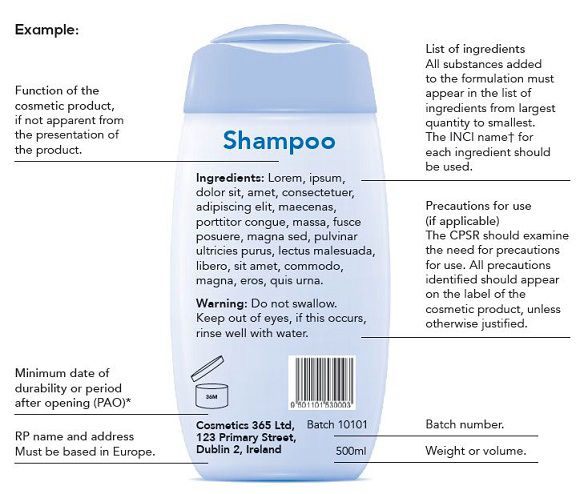Claim that suggest
. Approval of a cosmetic product
. A product has a particular benefit when that benefit is just a requirement of the Regulation are not allowed
Eg: Approved for sale in Europe or 'Does Not contain Lead'.

The term recycling is used separately in some European countries,
Labelling
The label of a cosmetic product must display certain information as set out in Article 19 of the Regulation. The language of the label must be the language of the country where the cosmetic will be sold.
Minimum date of durability is the date the cosmetic product will remain safe for use if stored under appropriate conditions. If a cosmetic product has a minimum date of durability of over 30 months, then a period after opening (PAO) is required.
PAO is the length of time after opening for which the product is considered fit for use by the consumer. An ‘open jar’ symbol followed by the period (in months and/or years) shows the PAO.
Minimum date of durability and PAO are not random figures. Rather, they are determined as part of testing required to be detailed in the cosmetic product safety report (CPSR) and evidence to support the declared minimum date of durability and PAO must be included in the CPSR.

